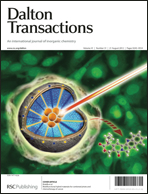For the first time, porous peanut-like Bi2O3–BiVO4 composites with heterojunctions have been synthesized by a one-step mixed solvothermal method with the assistance of a L-lysine template. A mixture of ethylene glycol (EG) and H2O (volume ratio of EG–H2O = 3 : 1) is used as the solvent. Unlike the traditional methods, no concentrated HNO3 and/or NaOH are involved in diluting Bi and V sources in the adopted approach. The as-synthesized peanut-like samples are rough and porous on the surface and to some extent are interior-hollow. The degradation of methylene blue (MB) is employed to evaluate the photocatalytic activity of the Bi2O3–BiVO4 composite. It is observed that the composite performs much better than Bi2O3 and BiVO4, plausibly due to heterojunctions formed between Bi2O3 and BiVO4. To investigate the relationship between structure and performance, the as-synthesized samples are characterized by XRD, XPS, SEM, TEM (HRTEM), UV-vis DRS, PL and nitrogen adsorption–desorption methods. Additionally, a possible growth mechanism of this hollow peanut-like structure and the separation process of photogenerated electron–hole pairs on the heterojunctions have been discussed.

You have access to this article
 Please wait while we load your content...
Something went wrong. Try again?
Please wait while we load your content...
Something went wrong. Try again?


 Please wait while we load your content...
Please wait while we load your content...